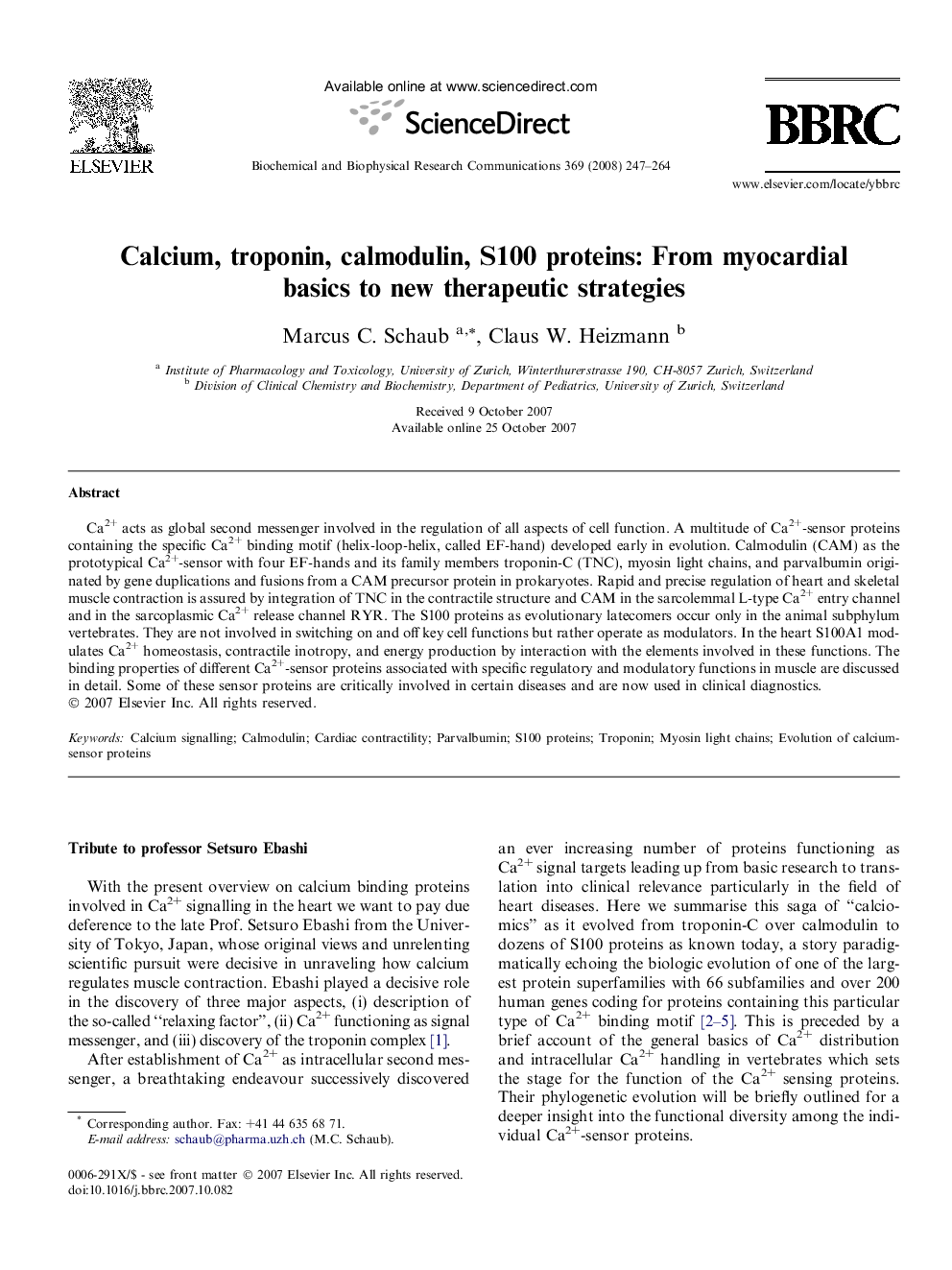| کد مقاله | کد نشریه | سال انتشار | مقاله انگلیسی | نسخه تمام متن |
|---|---|---|---|---|
| 10766858 | 1050679 | 2008 | 18 صفحه PDF | دانلود رایگان |
عنوان انگلیسی مقاله ISI
Calcium, troponin, calmodulin, S100 proteins: From myocardial basics to new therapeutic strategies
دانلود مقاله + سفارش ترجمه
دانلود مقاله ISI انگلیسی
رایگان برای ایرانیان
کلمات کلیدی
موضوعات مرتبط
علوم زیستی و بیوفناوری
بیوشیمی، ژنتیک و زیست شناسی مولکولی
زیست شیمی
پیش نمایش صفحه اول مقاله

چکیده انگلیسی
Ca2+ acts as global second messenger involved in the regulation of all aspects of cell function. A multitude of Ca2+-sensor proteins containing the specific Ca2+ binding motif (helix-loop-helix, called EF-hand) developed early in evolution. Calmodulin (CAM) as the prototypical Ca2+-sensor with four EF-hands and its family members troponin-C (TNC), myosin light chains, and parvalbumin originated by gene duplications and fusions from a CAM precursor protein in prokaryotes. Rapid and precise regulation of heart and skeletal muscle contraction is assured by integration of TNC in the contractile structure and CAM in the sarcolemmal L-type Ca2+ entry channel and in the sarcoplasmic Ca2+ release channel RYR. The S100 proteins as evolutionary latecomers occur only in the animal subphylum vertebrates. They are not involved in switching on and off key cell functions but rather operate as modulators. In the heart S100A1 modulates Ca2+ homeostasis, contractile inotropy, and energy production by interaction with the elements involved in these functions. The binding properties of different Ca2+-sensor proteins associated with specific regulatory and modulatory functions in muscle are discussed in detail. Some of these sensor proteins are critically involved in certain diseases and are now used in clinical diagnostics.
ناشر
Database: Elsevier - ScienceDirect (ساینس دایرکت)
Journal: Biochemical and Biophysical Research Communications - Volume 369, Issue 1, 25 April 2008, Pages 247-264
Journal: Biochemical and Biophysical Research Communications - Volume 369, Issue 1, 25 April 2008, Pages 247-264
نویسندگان
Marcus C. Schaub, Claus W. Heizmann,